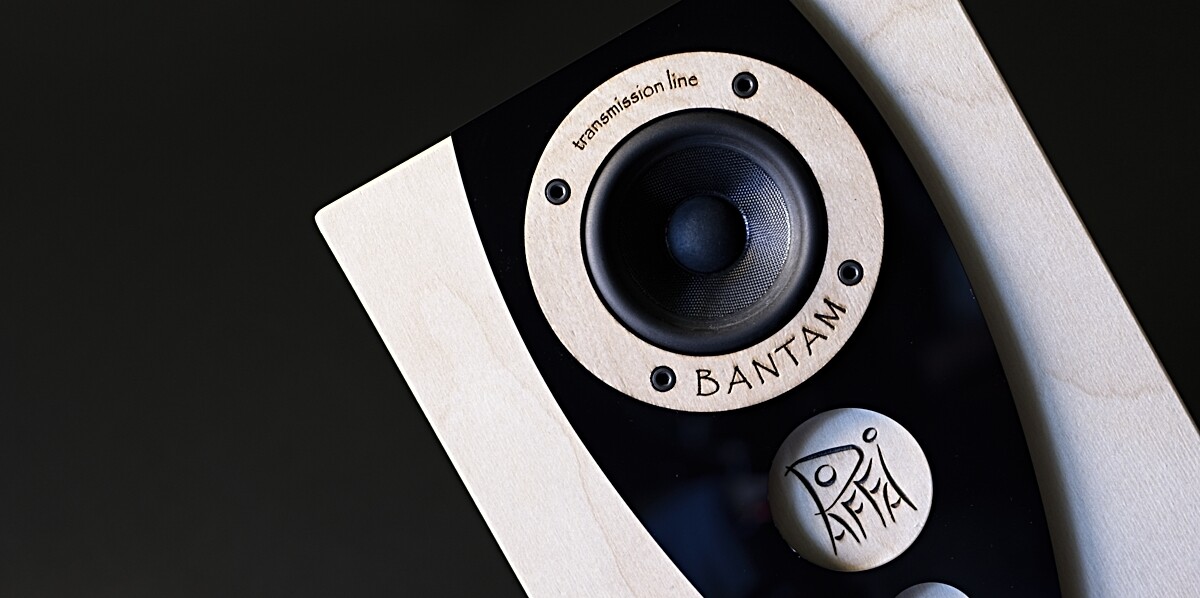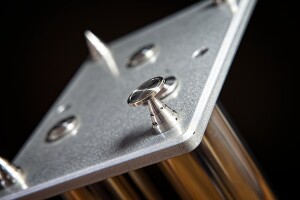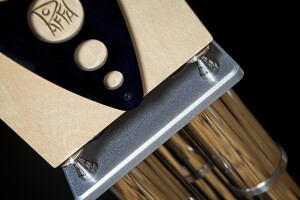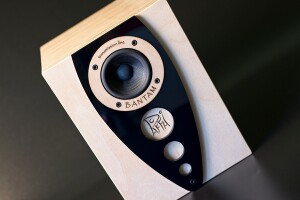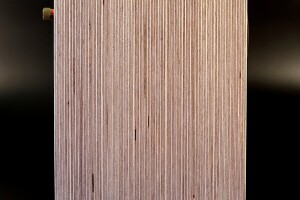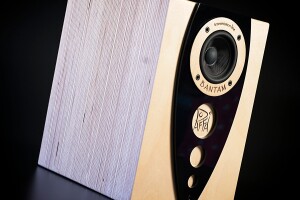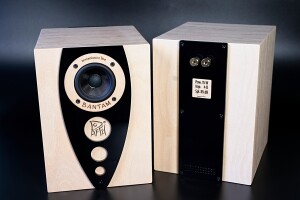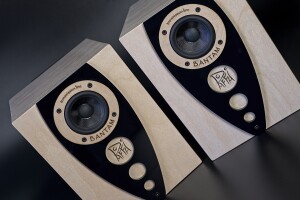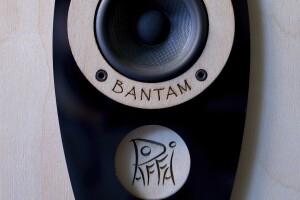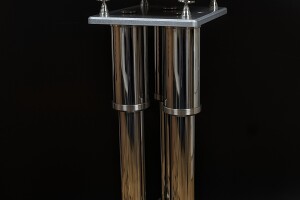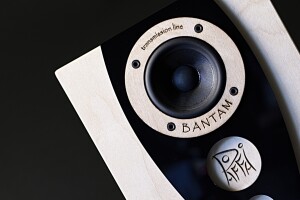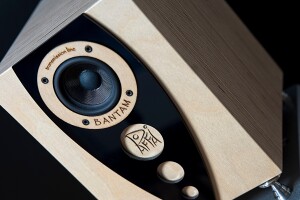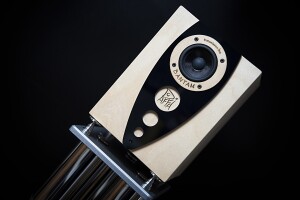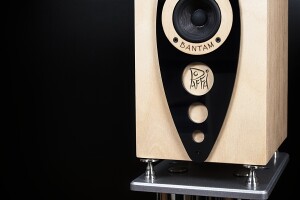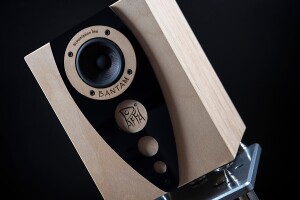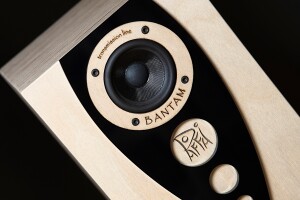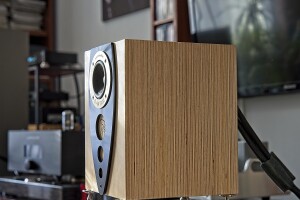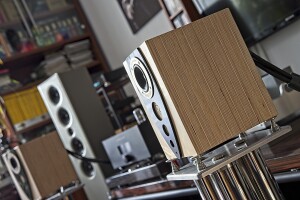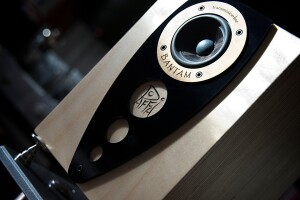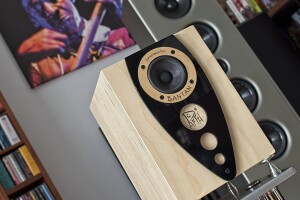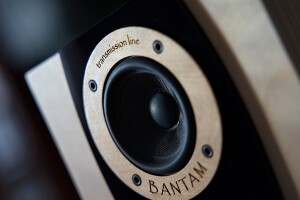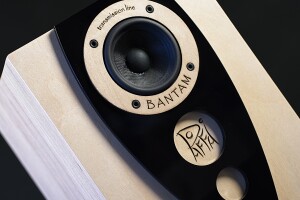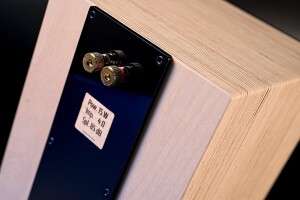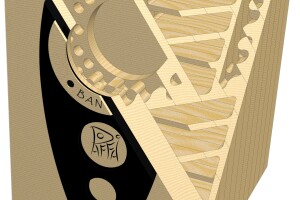Over two years ago I had a chance to spend quite a long time listening to very interesting, quite unusual design-wise, stand-mount speakers from Hungary called SYZYGY. The latest product of this company, the Raffai-Audio BANTAM, is in some ways even more original.
Introduction
If you have read my review of the Raffai-Audio SYZYGY (see HERE) you may remember how original their design was, with their woofers (one per unit) placed on the top baffle, and the cabinets of roughly triangular shape. Multiple listening sessions I conducted proved to me, beyond doubt, that the Hungarian manufacturer had not chosen any of these solutions just to differentiate itself from others, but rather to achieve an intended (high) level of performance. In my humble opinion, they succeeded and the SYZYGY became one of my favorite small stand-mount speakers. That’s probably one of the best ways for a company to introduce itself to the market – with an impressive, hard to forget product both in terms of performance, looks, and design.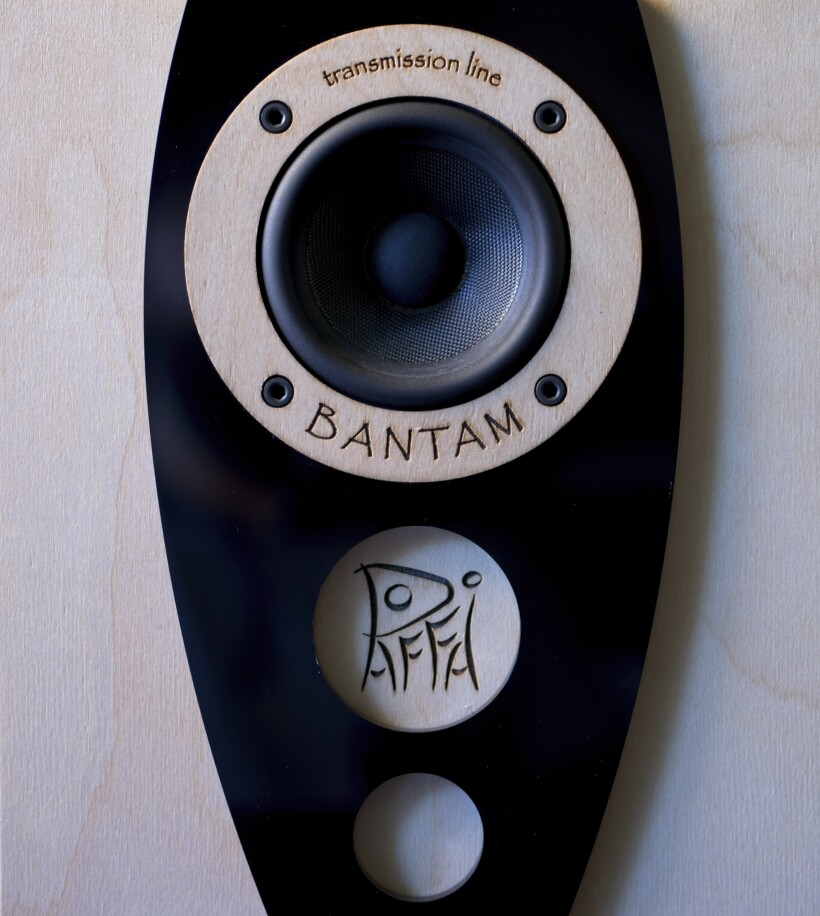
The question Raffai’s engineers must have asked themselves was (most likely): where do we go from here? What’s the next step in the brand’s development? One could have expected they would have gone big with either bigger stand-mount speakers or maybe with floor-standing ones. They did prepare a new version of the SYZYGY, named 6.5, featuring a bigger mid-bass woofer and with higher sensitivity. But as far as brand new models go, the answer came in the form of an even smaller speaker they named BANTAM.
So what is BANTAM? Honestly – I had no idea. So I checked. The Merriam-Webster dictionary explains:
- any of numerous small domestic fowls that are often miniatures of members of the standard breeds
- a person of diminutive stature and often combative disposition
I liked the latter definition – very small, yet combative person, as in with great heart and conviction for whatever he/she/it does. In this particular case, I assumed, it would concern the way the new Raffai Audio speakers go about reproducing music. It sounded quite promising despite the fact, that these are smaller than SYZYGY, truly diminutive speakers.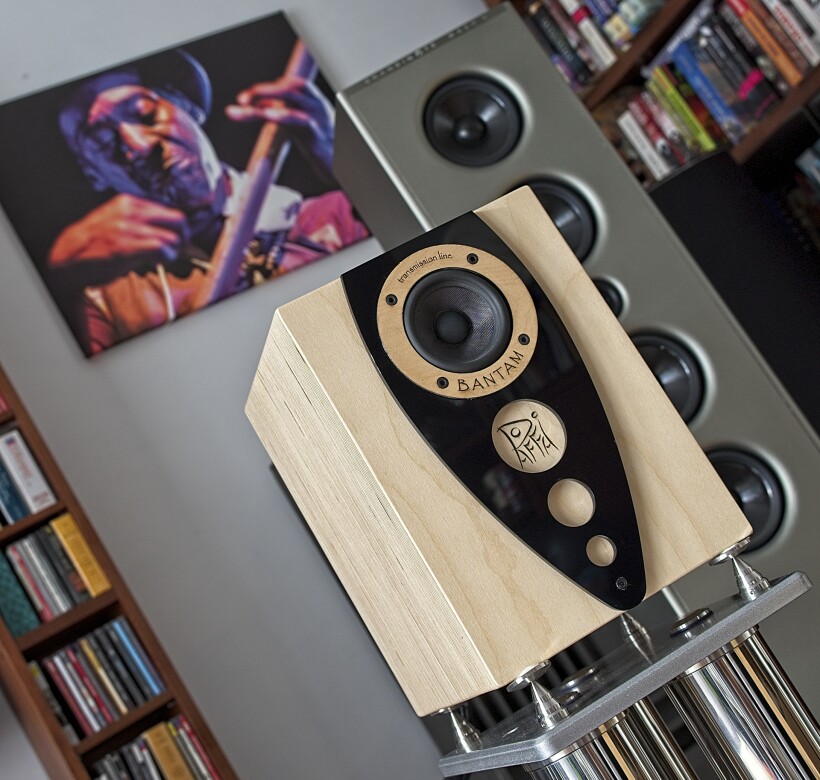
Design and features
The size (19cm in width, 26cm in height, and 22cm in depth) is not the only distinguishing feature that makes BANTAM special. At first look, these are much more „normal” looking speakers with their regular, rectangular shape. What makes them a representative of quite a rare species is a single, 3 inch, full-range driver. While many people use multi-way loudspeakers, as an array of specialized drivers, each for a certain frequency range, which usually does a better job than a single one that has to cover the whole range, the other side of this coin is a crossover. The latter has to „split” a full-range signal coming from an amplifier in such a way, that each driver receives and reproduces only its part.
There are several types of crossovers, designers use various components, filters, slopes, etc., but there are always the frequency areas where one driver takes over for another and these are the troublesome ones. The ultimate goal is always the same though, to achieve as coherent and full-range sound reproduction as possible. Depending on how well such a circuit is designed and built, the sound one can hear coming from speakers is more or less coherent. There are some music lovers particularly sensitive to this aspect of sound reproduction and whenever there is a problem there, it can ruin the whole experience, not allowing such individuals to fully enjoy the music.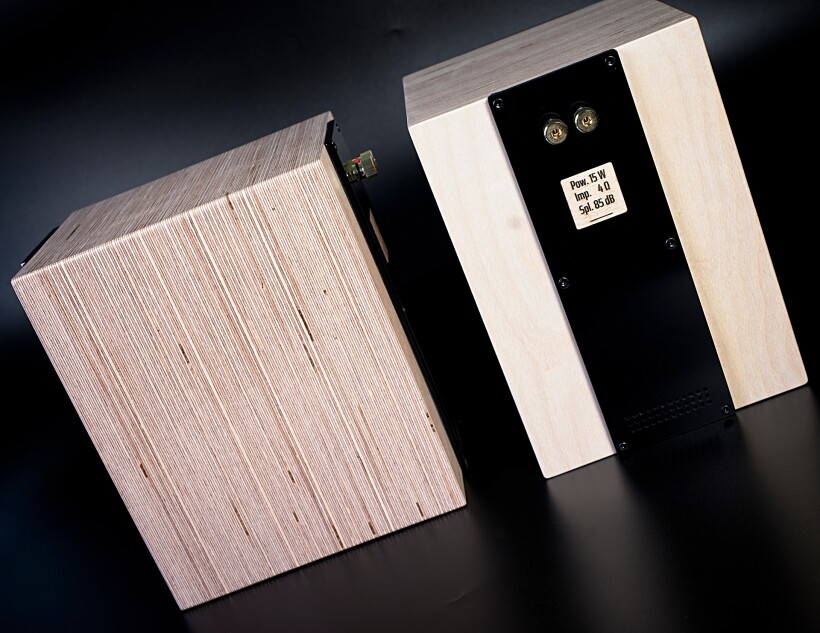
One of the answers to this issue is developing speakers featuring a single, full-range driver, hence needing no crossover at all. As with every single solution in audio, also this one has its pros and cons. The former are simple – a coherent, very natural, thus user-friendly sound reproduction. The latter include (among others) a somewhat limited frequency range, such a speaker can properly reproduce. In other words, often one or both range extremes are to some point withdrawn. As in any loudspeaker design, engineers have to come up with solutions to such limitations. Such efforts are usually focused on the cabinets supporting drivers in sound reproduction. And now, let’s circle back to BANTAM.
These new speakers, as I’ve already mentioned, feature single, 3-inch full-range drivers with their membranes made of fiberglass. The first obvious conclusion – they do not need any crossover, hence should offer an ultimate coherence of the reproduced sound. The second thought that came to my mind was sort of a (hardly welcomed in the reviewer’s mind) preconception that the size of the driver had to limit its performance, particularly in the bass area. The Raffai Audio engineers could have chosen to support low-range reproduction using a common solution – a vented cabinet with a bass-reflex port. Luckily (at least from my perspective), they didn’t, but rather chose a different, surely more difficult to design and properly implement a solution, namely a transmission line.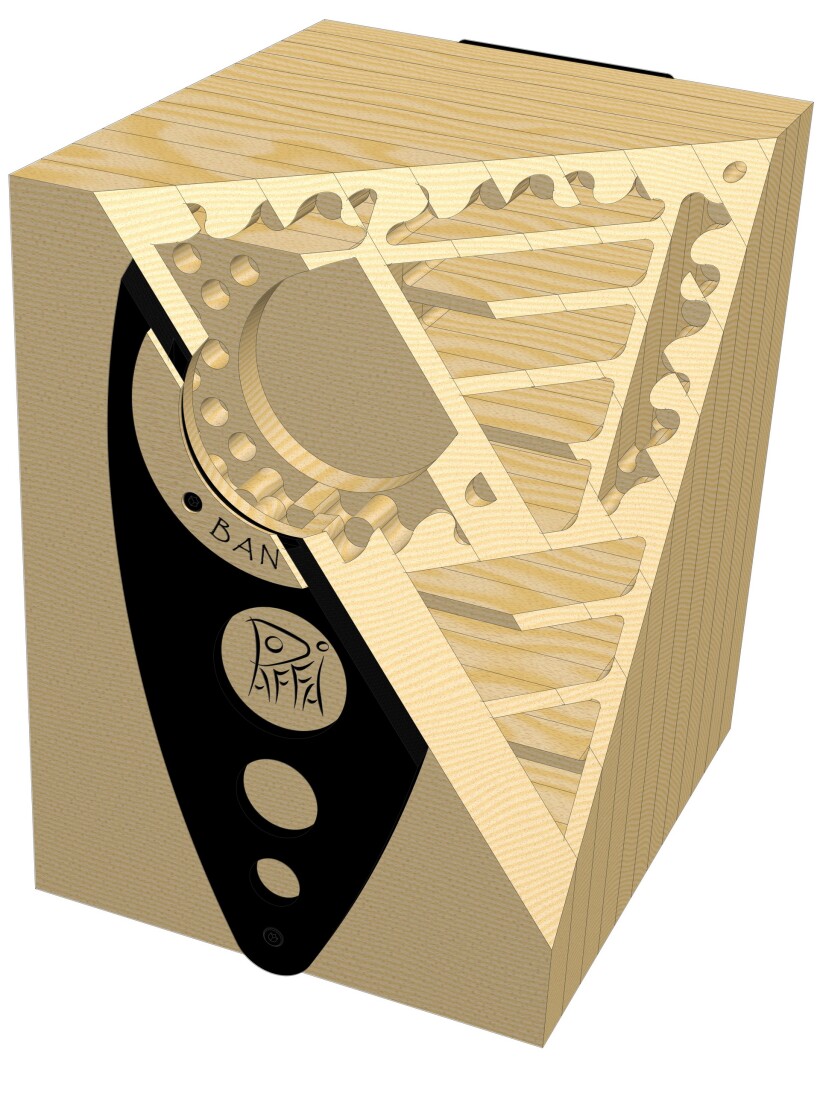
I am sure many of you had a chance to experience this type of design more than once (even though it is not even close in popularity to bass-reflex solution) but if you did, it was most likely applied in large floor-standing models. Why? Simply put, a transmission line is sort of a labyrinth placed inside the speaker’s cabinet hence it requires quite a lot of space. And yet… Raffai Audio used the solution for their tiny BANTAMs. I was intrigued by that fact starting from the very first email regarding this model I received from them.
I also received a picture from Mr. Laszlo Raffai of what the inside of the BANTAM cabinet looks like. The transmission line already indicated using some sort of labyrinth – the one seen on the picture suggests it’s a very complex one. The manufacturer states, that due to the cabinets having a special, standing wave and echo absorbing internal structure, no damping material had to be used. While using damping is necessary for many, if not most, speaker designs, experience shows, that those that require no damping at all usually exceed in terms of conveying high energy of sound, and delivering an abundance of tiniest details and subtleties. In the case of single 3-inch drivers, this should lighten the load, so to speak, and enhance their performance.
The manufacturer does not offer grills or bespoke stands for this model. This is a 4Ω (nominal) design with a sensitivity of 85 dB, and with power handling of 15W. On paper, it makes it quite difficult to drive, but practice proved otherwise. One more thing. Despite the fact these speakers are rated at 15W power handling, due to the special design the manufacturer recommends using amplifiers delivering at least 20W output. Or, as Mr. Raffai wrote in an email: „the more the better”. Just to be clear – the output of your amplifier may be high, but it doesn’t mean you can use it all with these speakers – be reasonable.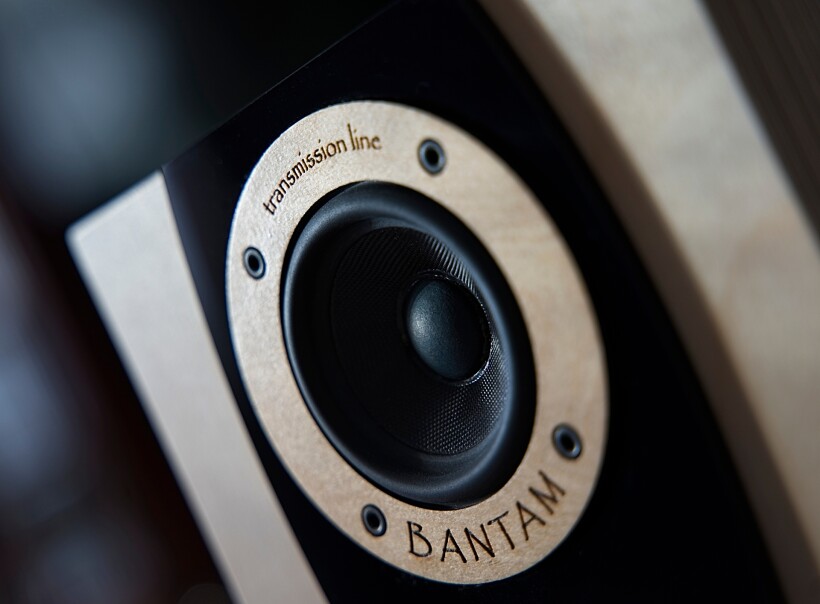
Sound
As I’ve already mentioned, Raffai Audio does not offer bespoke stands for BANTAM, hence I had to arrange a pair (of proper quality and height). For the SYZYGY it was Mr. Janusz Rogoz of Rogoz Audio, who prepared fantastic stands I could use in the review. This time, I asked Mr. Tadek Piotrowicz of the ALPINE-LINE, who prepared and delivered a pair of beautifully made, really heavy, metal stands with adjustable spikes on both ends (to level the whole design at floor-level, and speaker placed on it). The company offers multiple versions of these stands (and other types), as well as custom-made stands (also racks and platform), and based on my experience so far, they are well-designed, made&finished. Since the footprint of the BANTAMs is so small, to place them on top of these stands I had to remove felt pads glued to the bottom of the speakers, but other than that, it was a very good fit.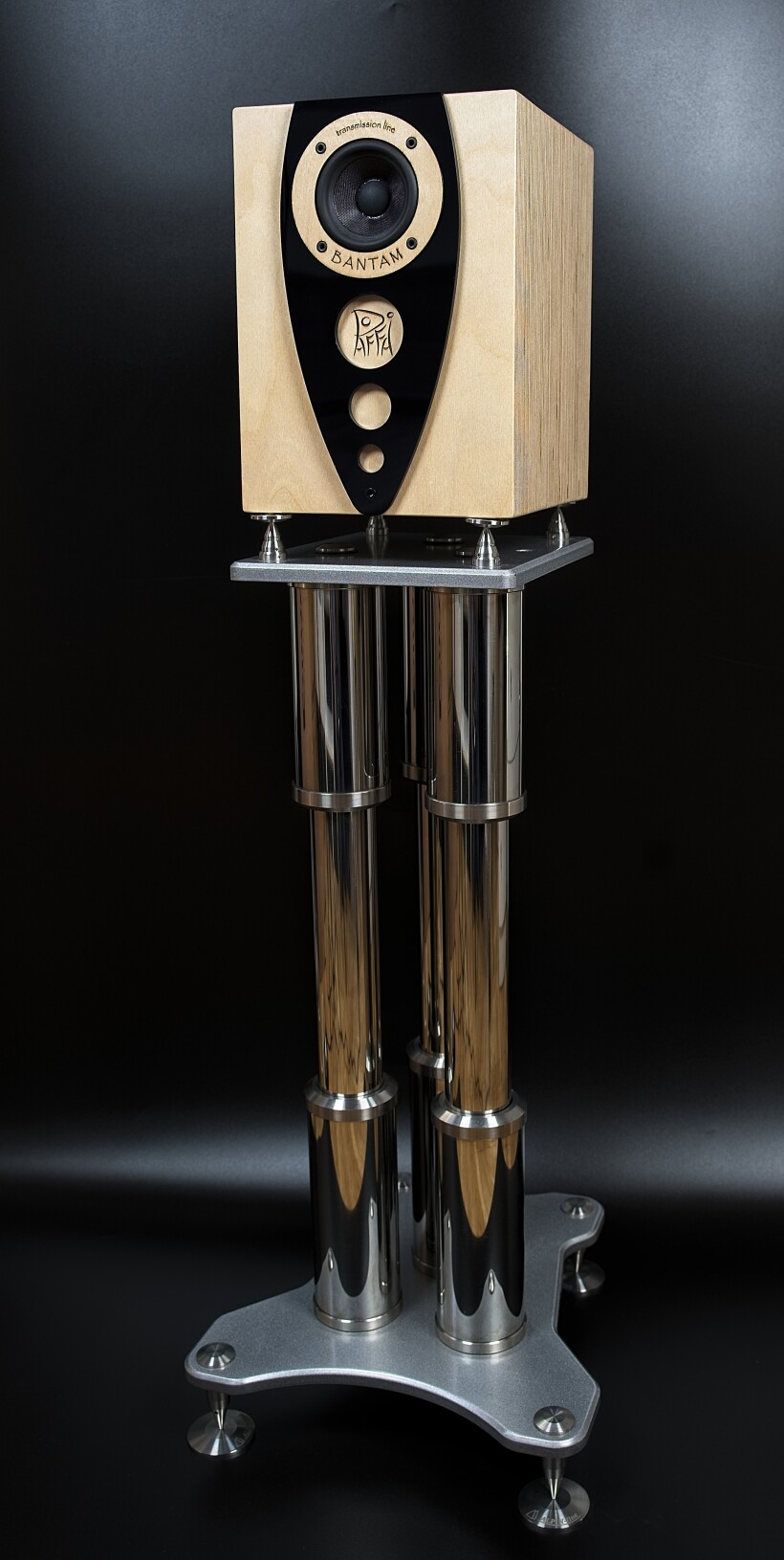
It did happen later, during my experiments to achieve an optimal sound, but I’d like to make it easier for those of our readers, who will try these speakers themselves. Namely, I found putting additional weight on top of speakers (I just used some books) advantageous to the performance and overall stability (the spaces between spikes were a bit too big for the size of BANTAM, hence I needed some additional stability). Interestingly, Alpine-Line has recently presented photos of their new design – stands with sort of a hinged lid, that is placed on top of speakers to add weight and stability, and further dampen unwanted vibrations. At the time of this test, I did not have this novelty at my disposal, hence the books.
A recommendation regarding stands Mr. Raffai gave me, was to look for ones high enough to place BANTAM’s drivers more or less at the same height as my ears in the listening position. That’s why the Alpine-Line stands had to be quite tall (around 70cm). The next challenge was to find a proper placement for the speakers. Considering their size and design, I placed them closer to each other and my listening position than any floor-standing speakers, creating in this way almost a near-field experience. That also meant placing them quite far out in the room (far from walls) which, in my experience, enhances spatial aspects of presentation, but decreases the support room’s walls may offer speakers, particularly in the bass range. I also toed them gently in. It took a while to find an optimum distance and angle but finally, I was satisfied.
Before I get to the sound impressions let me quote the concept behind those speakers as presented to me by Mr. Raffai, as it was only fair to try and establish, whether the designers achieved their goals:
- “Small drivers offer an exceptional transient response and the finest details, while full-range speakers benefit from extraordinary phase accuracy at each frequency that results in exceptionally realistic presentation. BANTAM offers exceptional listening quality for a moderated price for those, who listen to music in room <25 m2.”
- “BANTAM let you listen to the real sound of your audiophile/high-end system. Not more, not less.”
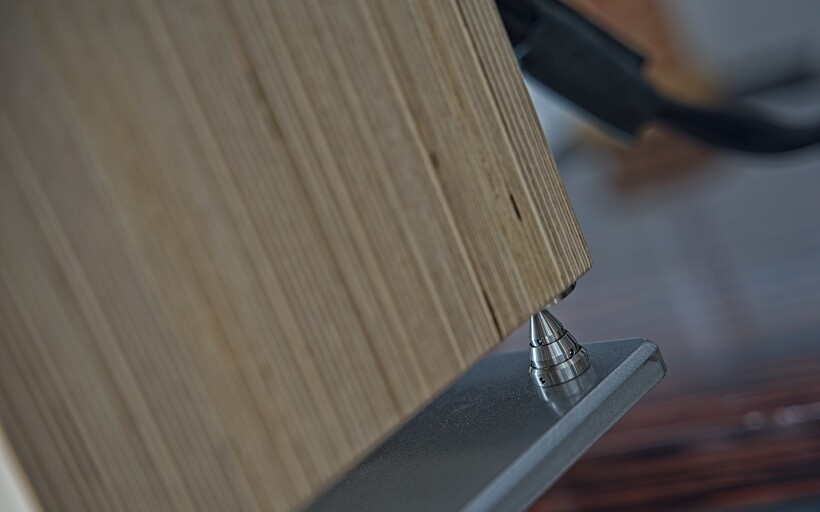
As for the setup, meaning mostly an amplifier to drive BANTAM, I tried several options. I started with the excellent, also recently reviewed Soundastic Reference (see HERE), a 6,5 kEUR solid-state integrated with an output of 2×260 W @ 4Ω, with my LampizatOr Pacific DAC and J.Sikora Standard Max turntable as sources. This setup offered one of the first impressions of Hungarian speakers that I shared with Mr. Raffai. While the coherence of the presentation was excellent, as expected, dynamics quite impressive, the sound was fast and detailed, in general, it seemed a bit too bright and lean (not rich enough) for my taste. It was clear that a contributing factor to this impression was the fact of switching from my large, 3-way, floor-standing Ubiq Audio Model One Duelund Edition speakers offering a much larger volume of sound. Yet, it seemed to me, it was not just about that. I believed, another amplifier offering richer (maybe a bit less neutral and even more natural sound than Soundastic’s, but in this case I expected it to be an advantage), tuneful midrange, and bass could be a better match for the BANTAM.
The next up was another integrated, but of a completely different variety. I plugged the BANTAM speakers into the Allnic Audio T-1500 MK II (review pending) 300B SET. According to its manufacturer, the T-1500 MK II can deliver up to 10W of output (most 300B SETs offer no more than 8W @8Ω), and it offers a switch (instead of separate speaker outputs) for 4Ω speakers. On paper, it seemed not to be the best partner for the Raffai Audio’s new speakers. On the other hand, while this particular 300B SET offers a more neutral, less midrange-focused performance than most of its kind, with its rich, coherent, fluid, natural, and beautifully spacial sound, it could offer BANTAMs exactly what they (in my opinion and for my taste) needed. Assuming that the 10W would be enough to drive them. I hoped that considering the size of both, drivers and cabinets, as well as the lack of crossovers, it could be enough despite the manufacturer’s recommendation of a minimum of 20W.
OK, no more suspense. The 10W output (at least of this particular amplifier featuring very special, Permalloy output transformers) was enough! Not to achieve sound pressure needed for a dance party, but for a small, or, in my case, mid-size (24 sqm, 3 meters high) room and expectations of „normal” volume levels, it was more than enough. This particular setup was not as versatile as that of the same amplifier with my (floor-standing, but of much higher sensitivity) GrandiNote MACH4, so while Chie Ayado’s vocals sounded beautiful, the latest album of Steve Vai left a feeling of something missing in the presentation. The former album („Friends”) focused strongly on the artist’s voice and charmed me with its palpable, spacial, particularly natural, and coherent presentation. The BANTAM disappeared from the room leaving me with music and a leading artist rendered in front of me in a very convincing manner. The voice of Chie Ayado was very clear, yet rich, present but not artificially emphasized or pushed forward. While my (floor-standing) speakers in the same setup were able to build a bigger image, better fill the whole room with the sound than the Hungarian ones, these tiny, single-driver boxes did a really good job in creating a presentation that was immersive and highly enjoyable.
The latter album, focused obviously on Steve’s electric guitar, much more intense and dynamic, still sounded good, with the rich, yet the naturally raw sound of this instrument, with a good drive, decent large scale, and really good microscale dynamics. Yet, the volume of the presentation, its momentum was not quite on the level such music requires. It seemed as if the BANTAM sounded a bit too smooth, too „civilized” for this type of music. Just to make sure I played also one of the AC/DC’s albums followed by Aerosmith’s. Since these were not instrumental recordings things took a bit different turn. I mean, in general, I still wished for more momentum, bigger scale, but since in both cases vocals played a significant role, and both, Brian Johnson’s and Steven Tyler’s voices were presented in a very convincing, properly dramatic manner, leading guitars of Angus Young and Joe Perry were rich and fast, those small initial reservations didn’t play that significant role. In other words, I enjoyed the performances even though it was clear, that such music played via some bigger speakers would be even more fun to listen to.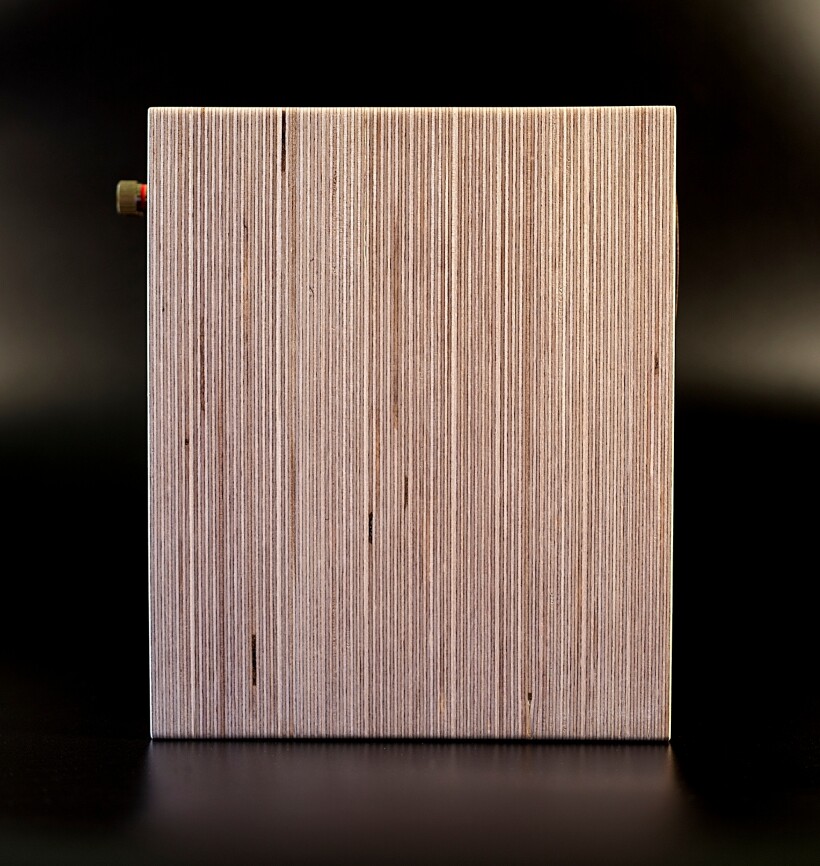
To challenge the BANTAM even more I switched to classical music. I chose quite a special interpretation of Beethoven’s (Révolution) 6-9th symphonies played by Le Concert des Nations conducted by no other, then the great Jordi Savall. Their take on the famous symphonies suited BANTAMs quite well, as the scale of performance was not that big as usual, and the period instruments and maestro’s style of conducting shifted the balance more towards unique fluidity and coherence, and wonderful tonality backed up by a good resolution of these speakers. So while the music got quite dense, the Hungarian speakers still did a good job of delivering a lot of information, details, and subtleties, which allowed me to enjoy these beautiful recordings.
More acoustic and vocal music confirmed my initial impressions – pairing the Allnic Audio’s 300B SET with BANTAM speakers offered a very musical, natural, fluid presentation with good imaging and nicely rendered spatial relations between performers and whatever room or venue they played in. So anybody listening primarily to this type of music in a small to medium size room at reasonable volume levels, who also particularly values coherence of highly detailed presentation and natural flow of music may be really happy with such setup. Yet, I decided to keep looking for an even better, or more versatile pairing or in other words, move to the final stage of the test employing more powerful solid-state amplifiers including my trusted GrandiNote Shinai Class A (2x37W) integrated and a Mark Levinson set (No 5206 + No 5302).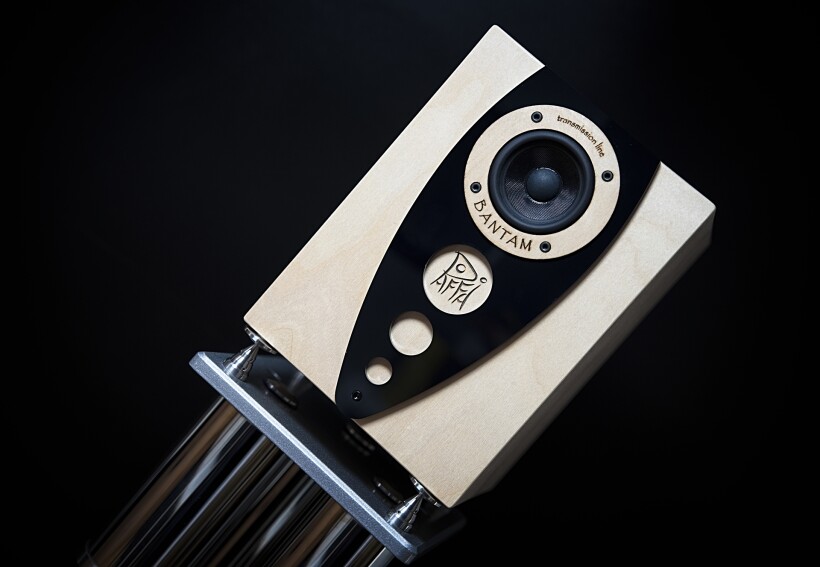
As soon as the Shinai warmed properly up it became clear, that so far it was the optimal partner for the BANTAM speakers. I continued my adventure with Jordi Savall’s take on Beethoven symphonies and it quickly became obvious that for this type of music 37W output of Italian class A solid-state driving BANTAM was even better than 10W from Korean 300B SET. The sound became more substantial as its volume and mass increased. Also, the momentum improved, as well as macro-scale dynamics (the microscale was good already with 300B). It seemed that with the GrandiNote amp BANTAM, despite their size, were able to better present large dynamics swings characteristic particularly for the 9th symphony. One unexpected effect of switching to my integrated was also a bigger depth of the soundstage, which also positively influenced my perception of an orchestra’s performance. I pushed the volume up (to a high, yet still reasonable for these speakers levels) and yet the Raffai Audio speakers didn’t mind at all, keeping the presentation clear, transparent, and well-organized.
The „real” fun began though, when I was finally (reluctantly, I must admit) finished with Beethoven, switched to Mark Levinson separates (2x270W @ 4Ω) and for the next album chose the Art Blakey’s „The African beat”. The title of this album tells the whole story. Drums of all kinds, including African ones, take the central stage (not necessarily literally) which allowed the BANTAM speakers to show a different face. They conveyed the pace and rhythms, even the fastest ones, without hesitation, on point, so to speak. A very good differentiation allowed them to convincingly convey specific features of each of them. They kept the performance very lively, energetic, involving. It was drums, that most of the time attracted my attention, also because it was hard to believe, that these small speakers were able to present them in such a convincing (almost) realistic way.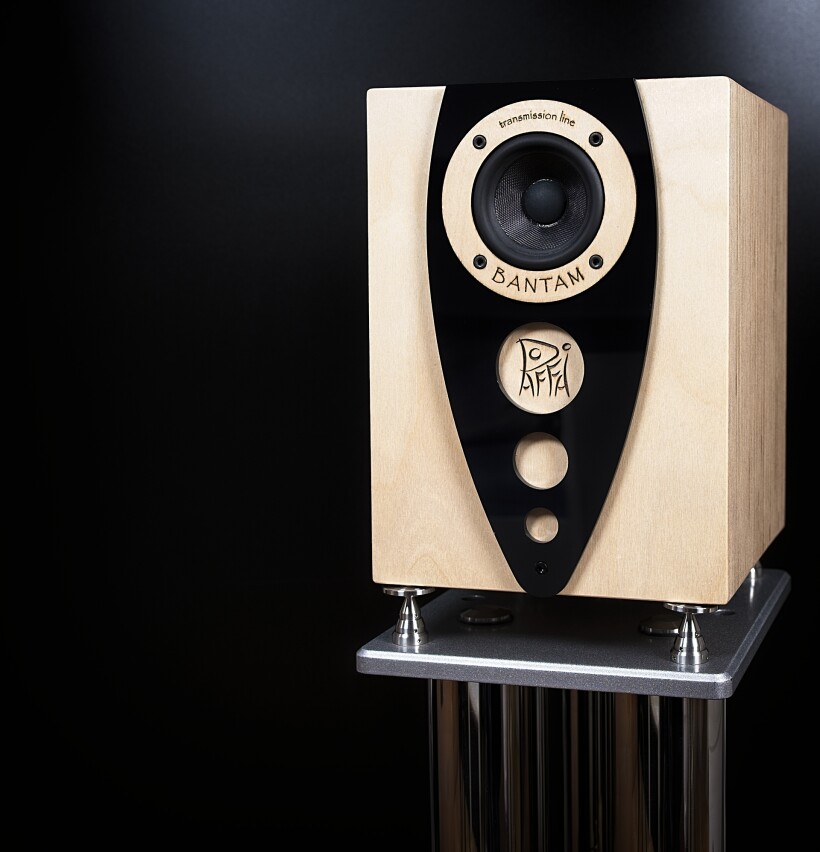
Sure, the BANTAMs had their limitations and the bass was not as extended as with my floor-standing speakers – I hope it is clear that I am not trying to convince you otherwise. Yet, since these African and percussion drums didn’t go that deep down the range, they did sound very convincing. It was also due to the clarity of each beat, its energy, and immediacy, good differentiation between them, as well as a nice decay phase. It was a highly enjoyable, even if touch surprising display of what can be achieved even with such small-body speakers when skillfully designed. No one would expect such performance judging by the looks of these tiny boxes, but the transmission line cabinets and lack of any damping elements, allowed Raffai Audio to achieve a fantastic level of performance, particularly in terms of conveyed energy, and maybe not the lowest, but still tight, clean bass. The top of the range, with some cymbals and other metal percussion elements, sounded crisp, open, with lots of air surrounding them. It was still the midrange that sounded the richest, most colorful, most palpable, particularly when tenor saxophone or vocals popped out in the mix.
The BANTAM provided an even better insight into the latest Bob James recording. A simple, well-recorded jazz trio, with maestro’s both, electric and acoustic keyboards, bass, and drums was delivered by the reviewed speakers in a quite close perspective. While in recordings that feature a lot of room acoustics cues I prefer a wide perspective, in this case of a studio recording it allowed producers to preserve the high energy of the performance. Such a short distance between me and the musicians also meant a close, almost direct connection with them and the music they played. BANTAMs built quite a wide, although not particularly deep soundstage, and rendered carefully each of the instruments on it. Hence not only placement but also the shape, body of each of them was presented in a precise, convincing way. The way the recording was prepared and played by the Hungarian speakers, provided me with a lively, highly enjoyable experience.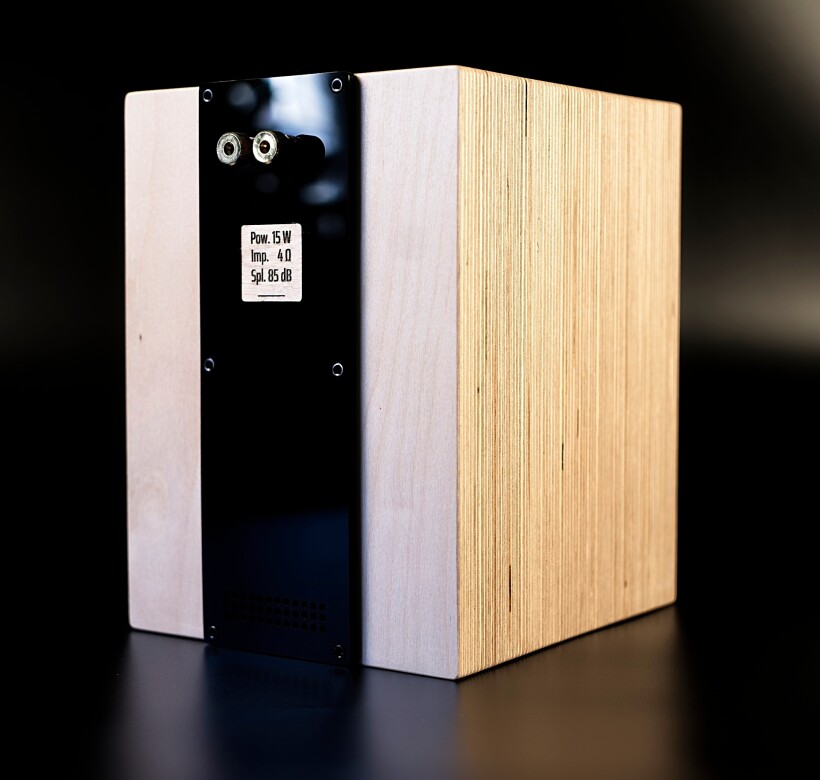
On the other hand though, while generally speaking, I was truly impressed with the BANTAM’s performance, also in terms of bass reproduction, the limitations were, at times, quite clear with double bass or piano not going as deep as they should have gone, kick drum not having quite the weight/power it should have had. Don’t get me wrong – I’ve heard larger speakers offering less impressive, less enjoyable bass performance than the Raffai Audio BANTAMs, but since I spend most of my time with one of two pairs of floor-standing loudspeakers I own, I could simply hear the differences between their and tested speakers performances. Yet, if I were to be limited to a small room, hence requiring small, stand-mount speakers, I would seriously consider the Raffai Audio product, especially if I couldn’t spend too much money. These are, after all, relatively inexpensive speakers, yet performing at a higher level than the price tag or stereotype of a single-driver design would suggest.
Summary
The Raffai Audio BANTAM speakers are quite special. You won’t find many (if any) single-driver speakers in such small, transmission-line cabinets. The Raffai-Audio team yet again developed a design that is different, or unique if you will, but not only in terms of design as such, or looks, but also performance. The latter is way different from what one may expect just by looking at these tiny boxes. Support them with high-quality stands, such the Alpine-Line’s I used, for example, an amplifier with decent output, but I’d suggest rather one on a bit richer, warmer side, and you will find yourself positively surprised again and again when going through your music library. Sure, these are not super-versatile speakers, they are not big enough for it, but are fully capable of delivering a faithful and highly enjoyable performance with almost any music. This confirms the second part of the design’s concept. Also the fact, that performance was quite different depending on the amplifier driving BANTAM confirms, that these tiny boxes are about conveying as much truth about the recording and rest of the system, as they can.
They sound fast, detailed, and, no surprise here, more coherent than most, even much more expensive designs available on the market, which confirms the first part of the concept. In other words, the Raffai-Audio team succeeded in achieving their goals and delivered customers yet another, maybe exotic, but really interesting design and a good performer too. I realize that probably no one will pair the BANTAM with such expensive amplifiers as my Shinai, or the Mark Levinson separates but using them proved, that the better amplification one uses to drive the BANTAMs, the better performance they deliver, way better than you’d expect from less than 1800 EUR speakers.
Technical specifications (according to the manufacturer):
- Design: 1-way transmission-line
- Cabinet size: 19cm x 26cm x 22cm (width x height x depth)
- Frequency range: 40Hz – 20kHz (-6dB)
- SPL: 85dB/1 watt
- Impedance: 4 Ohm
- Speaker terminals: single, gold-plated
- Power: 15W
Price (when reviewed):
- Raffai-Audio BANTAM: 1.790 EUR (promotional price until July 1st, 2022, then 2.690 EUR)
Manufacturer: RAFFAI-AUDIO
Associated equipment:
- Digital source: a custom passive server with WIN10, Roon, Fidelizer Pro 7.10, JCAT NET XE and JCAT USB XE cards with FERRUM HYPSOS Signature power supply, KECES P8 (mono) linear power supply for the server, JCAT USB Isolator
- D/A Converter: LampizatOr Pacific +Ideon Audio 3R Master Time (USB signal regenerator)
- Analog front end: J.Sikora Standard MAX turntable, J.Sikora KV12 tonearm, AirTight PC-3, phonostages: Grandinote Celio mk IV, ESE Lab Nibiru V 5.
- Power amplifiers: GrandiNote Shinai
- Preamplifier: Audia Flight FLS1
- Loudspeakers: GrandiNote MACH4, Ubiq Audio Model ONE Duelund Edition.
- Interconnects: Hijiri Million, Hijiri HCI-20, TelluriumQ Ultra Black, KBL Sound Zodiac XLR, David Laboga Expression Emerald USB, David Laboga Digital Sound Wave Sapphire Ethernet
- Speaker cables: LessLoss Anchorwave
- Power cables: LessLoss DFPC Signature, Gigawatt LC-3
- Power: Gigawatt PF-2 MK2 and Gigawatt PC-3 SE Evo+; a custom power line with Gigawatt LC-Y in-wall cable; Gigawatt G-044 Schuko and Furutech FT-SWS-D (R)
- Network: Silent Angel Bonn N8 + Silent Angel Forester F1 + optical LAN isolator
- Racks: Base VI, Rogoz Audio 3RP3/BBS
- Anti-vibration accessories: ROGOZ-AUDIO SMO40 and CPPB16 platforms and ROGOZ AUDIO BW40MKII feet, Franc Accessories Ceramic Disc Slim Feet and Wood Block Platform


